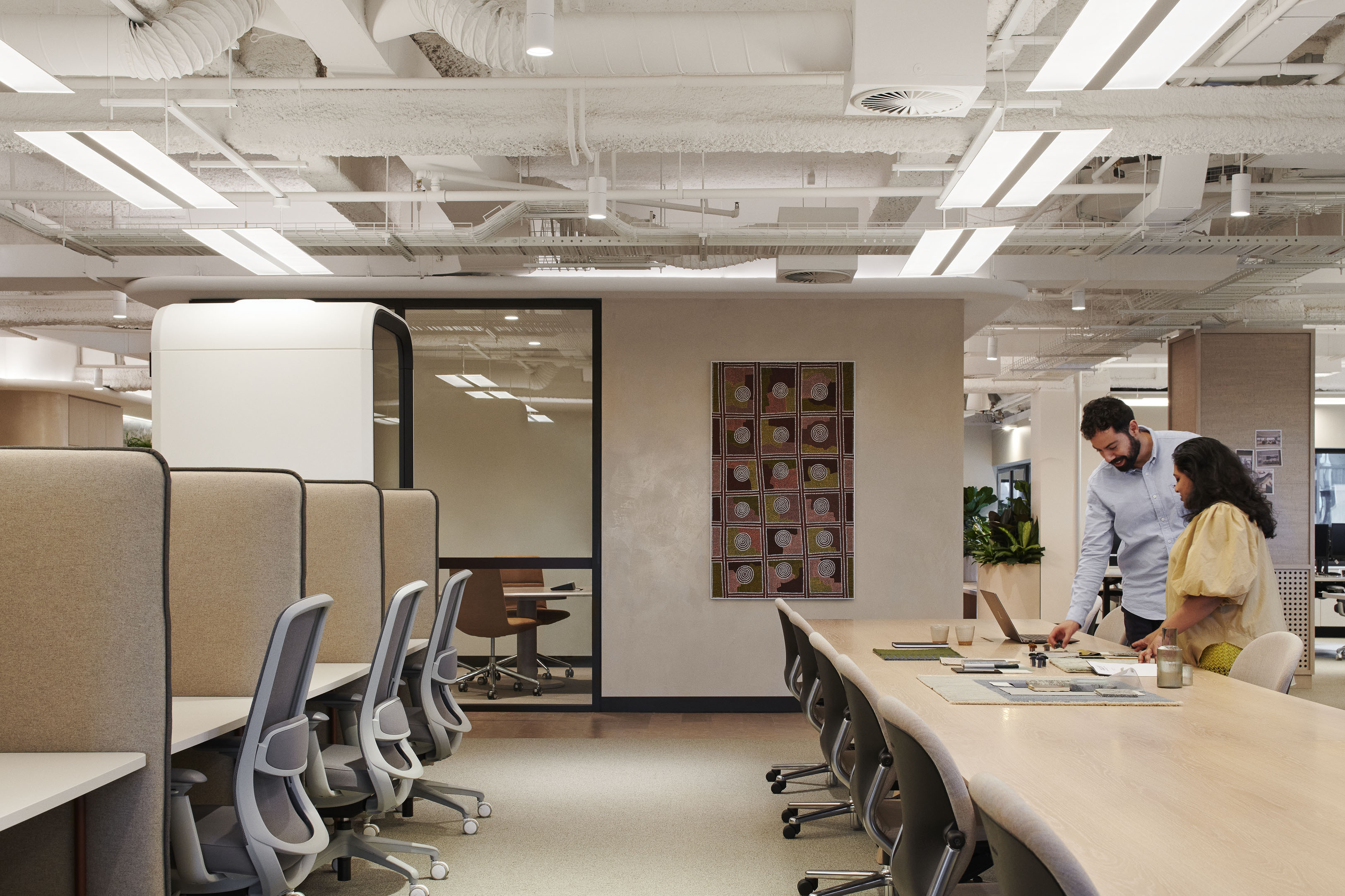**Collaboration**,
/kəˌlabəˈreɪʃn/
noun
the action of working with someone to produce something.
How do we innovate for collaboration in the workplace? If we had written an article on 'collaboration and the evolving workplace' just six months ago, it probably would have started like this:
The rise of new and emerging workplace technologies over the last few years has not only changed the way we work but also the way the workplace looks and operates. Zoom meetings, Slack channels, Microsoft Teams, and the never-ending array of other remote working platforms and tools have allowed us to work together, without physically being together. It’s a trend that is growing…
But now, in an era of flexible working and advanced workplace technology, the conversation is no longer just about faster internet speeds or the launch of 5G enabling high-quality video connections. With a growing emphasis on flexible working arrangements and the integration of cutting-edge workplace technologies, the dialogue has shifted to HOW we can work most effectively and collaborate successfully in this new age. Technology is no longer merely the driver of the future of work; it’s the enabler.
Although collaboration-enabling technology isn’t new, there is a lingering association between physical proximity and collaboration. And while this association is partially valid, collaboration is a lot more than being in the same room—opportunely, our new ‘normal’ is shaping up to include a lot less of this.
Given effective collaboration is a booster of employee satisfaction and happiness, we’re looking forward to a future where collaboration is a seamless experience for everyone involved. Let’s explore the challenges we’re facing and what the future has in store for collaboration in the workplace.
**Out with the old (style of collaboration), in with the new**
A fundamental shift we’ve noticed is the adoption of, rather than the investment in, the tools needed for remote or virtual collaboration. This is because most organisations already had the means; they just weren’t using them. Companies are recognising the benefits of flexible working, and with benefits come challenges, which we’ll explore a little later in this article.
First, what could collaboration look like in the future workspace?
**Collaboration in the future workplace**
With close-proximity discussions by the water cooler, large-scale meetings, and chatter-filled shared spaces abandoned for the foreseeable future, collaboration has become even more critical—because the requirement for intelligent and effective co-created work has not gone away.
The future of work is here now, and thanks to technology and economic shifts, the workplace is undeniably evolving. So, what does collaboration look like in the future workspace?
Remote work may be the new normal, but it’s not always the choicest way for teams to engage. Yet to succeed in today’s dynamic, connected world, teams need to master the art of successful collaboration—whether working remotely or not.
We foresee the future workspace as a hybrid of in-office and remote work. With collaboration straddling safe physical proximity and virtual connections, don’t be surprised to see a virtual-first prioritisation of communication channels and methods.
The flow between the experience of physical and virtual spaces will be central to success. The workplace will converge the physical and virtual worlds, centred on supporting workers to communicate clearly and effectively—wherever they are located.
Many companies are already investing in meeting room acoustics to ensure those not physically at the office can participate and experience a meeting just like an in-person attendee. Others are holding 100% virtual meetings with in-person staff scattered around the office on video and headsets to level the playing field between remote and non-remote staff. The goal is to ensure that those who are not physically present don’t have a different or subpar experience of a meeting so they can contribute fully to the collaborative effort of the team and stay engaged.
And to preserve precious time for collaboration (rather than tech wrangling), plug-and-play technologies that require minimal setup will be expected. Ease of use is essential. And on a more futuristic note, 3D telepresence (or hologram) technology, once thought of as far-flung sci-fi stuff, is on the horizon. We’ll be watching closely.
**The challenges of collaboration in the future workplace**
Companies are recognising the benefits of flexible working, and with benefits come challenges:
**Dispersed teams**
While dispersed teams aren’t new, they are the new normal. Regardless of the structure, having a team spread across multiple locations presents a considerable challenge. Aside from managerial problems, creating an organisational culture is immeasurably harder without a central location.
**Conflicts in working style**
Understanding and respecting each individual’s working style is critical for successful collaboration. Even when working in the same physical space, conflicts in working style have always existed. Add a little distance and less face-to-face interaction, and you have a recipe for small conflicts to become seriously damaging to relationships and productivity.
**Trust**
While also an important overriding business principle, trust is expressly significant to successful collaboration. Trust builds the foundation for productive, constructive conversations. On the other hand, distrust due to transparency issues and misunderstandings will damage collaboration within and between teams. But building trust across time and space can be slower coming or even inhibited by poor communication channels.







